Notes
Photography Challenge: Straddling Female Stereotypes as Women Become Marines
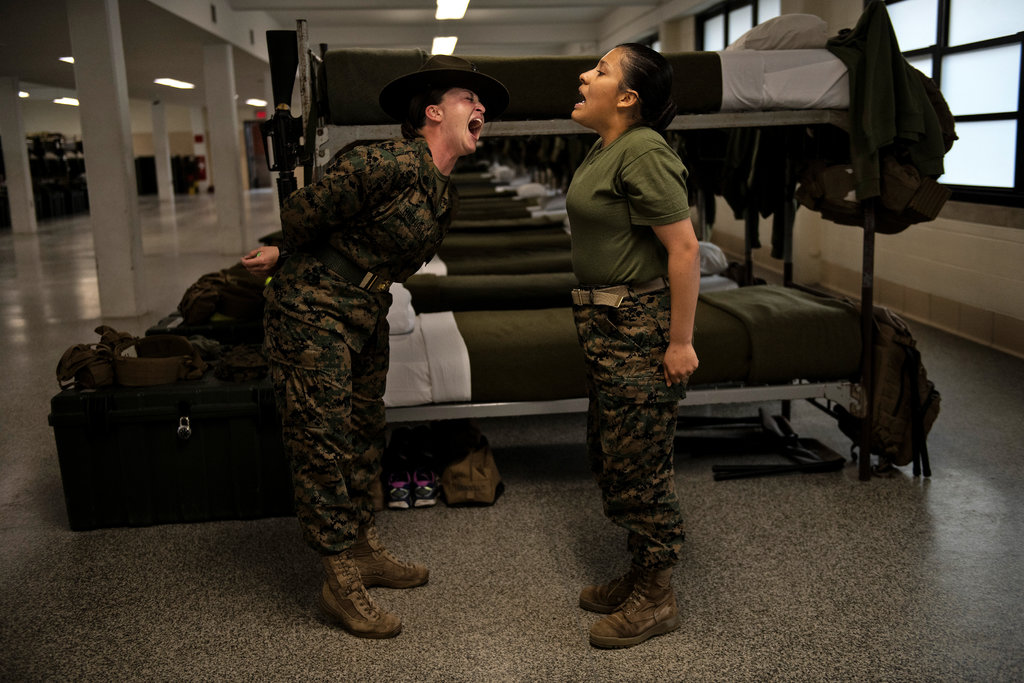
As if we needed any reminders of the glacial pace of progress, the #MeToo movement has exposed the underbelly of misogynist and predatory behavior that many women still endure on a daily basis. Race, class and sexual hierarchies compound these inequities for those marginalized by mainstream society.
Just in these past few weeks, women have once again had to trot out explanations about why politicians’ hugs and kisses are often unwelcome despite “good intentions.” Likewise, the pace of change in the military for both women and trans folks continues to be plagued by sexism, sexual violence, and transphobia. Is it possible in this context for reporting to capture the intricacies of military women’s experiences? Is there a way to represent those experiences while avoiding stereotypes about female weakness?
Lynsey Addario’s photo-essay, published recently in the New York Times, appears to take up this challenge. Addario follows a group of female recruits through their course of basic training, from their arrival at Parris Island in South Carolina to their induction as Marines. Her pictures of women show them pursuing the same training regimes as their male counterparts.
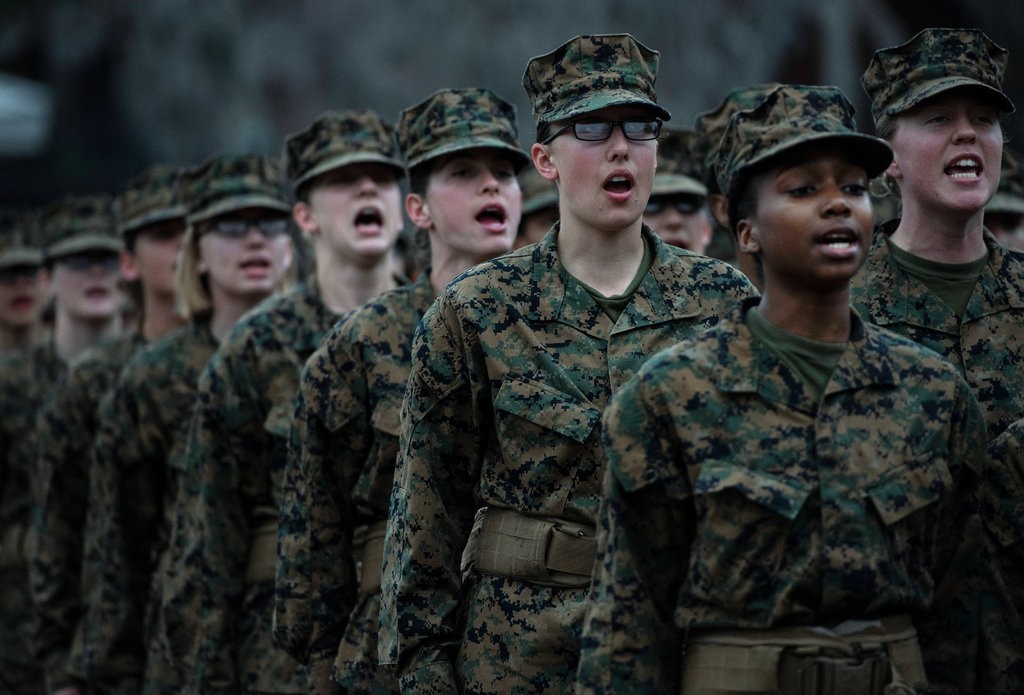
Distinctively replicating a photographic history of male soldiering, Addario’s photos feature the requisite display of women in fatigues on parade, doing push-ups during a morning athletic drill, and proudly wearing their Eagle, Globe and Anchor insignia.
One spokesperson, Colonel Posey, explains that both men and women receive the same basic training. Even as the Marine Corps remains the only military service that still segregates training by gender, she insists that “ … We hike the same miles with the same weight in our pack, we have one physical training playbook, our chow halls serve the same food.”
Except. Except that much of the photo-essay emphasizes gender differences in ways that reinforce the stereotype that women are less physically capable than men. For instance, we read in the story that women receive different grades for physical fitness tests. Likewise, women don’t receive the same haircuts and do get pregnancy tests.
Why do we need to know this? The story never elaborates on the significance of these details. Instead, the story reads like the photographer’s field notes, lacking the editorial scaffolding typically found in photo-essays.
Certainly, the “field notes” give the account a sense of immediacy, perhaps aiming to recreate the spatial and social intimacy of the reporter on the scene. And, yet, we never hear from the recruits themselves. They remain as voiceless as the demand by the drill instructor to stop using personal pronouns. Hailed in the photo-essay’s title, “‘I’ Will No Longer Be in Your Vocabulary,” one of the main objectives of basic training is to erase recruits’ individuality. Without women recruits’ voices, however, references to differences reverberate with a tedious inevitability.

With no hint of irony, the photo-essay reinforces gendered expectations about how women respond to the physical rigors of military training. For instance, Addario’s close-up portrait of Angela D. Samson taken during “the Crucible,” a 54-hour test of physical and mental endurance, depicts a young, dark-haired woman whose face is covered in light brown mud. Whether somber or tired, Samson averts her eyes from the camera’s gaze, staring just off into the distance. Almost nothing about this photograph suggests her capabilities or strengths; instead her youth and vulnerability stand out.
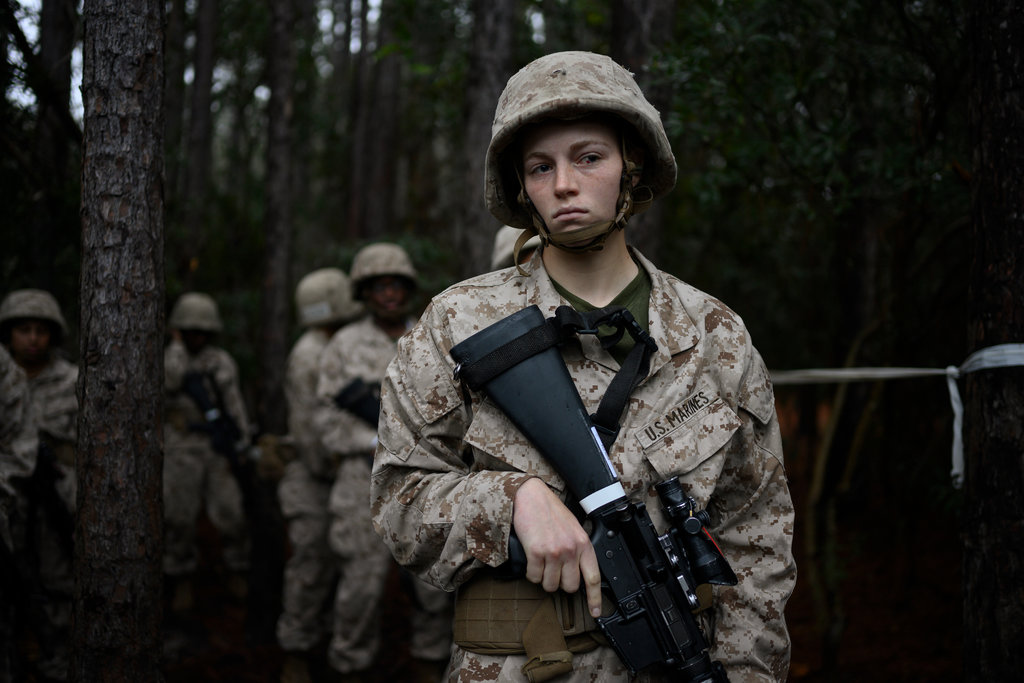
Similarly, Addario turns the camera to a sad-faced recruit, Danielle Kallmes, 19, again in the foreground, whose lack of overt action belies any rhetorical praise of women’s ability to endure “the Crucible.”
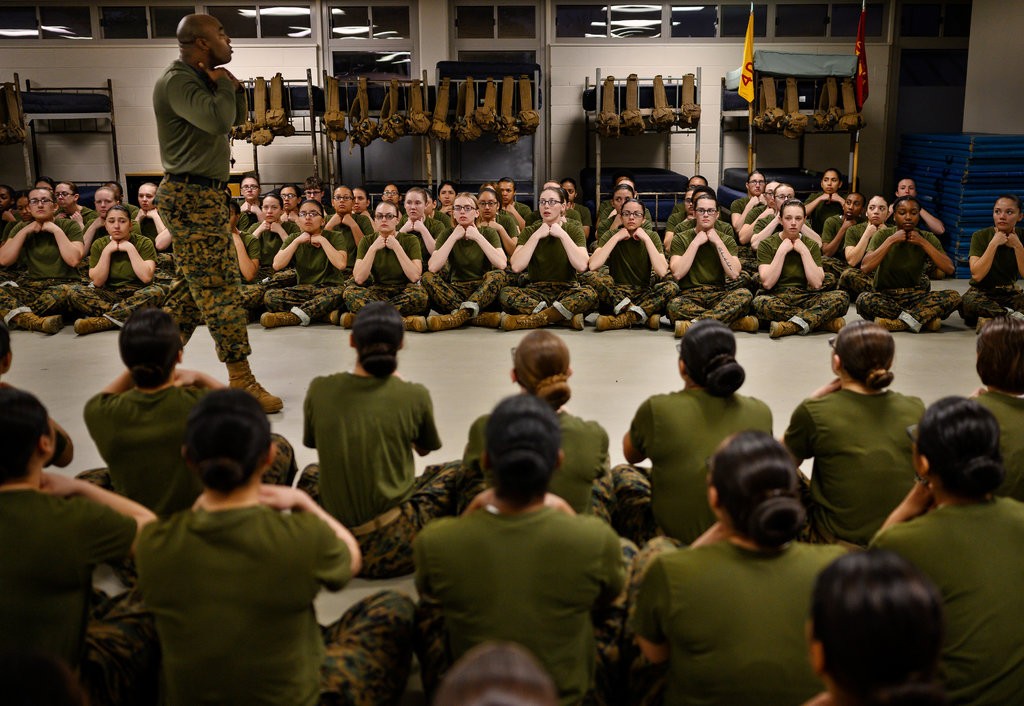
Male authority remains a dominant presence in the photo-essay, which is not surprising given that women make up only 8 percent of Marines, the lowest of any military branch. Here, a male instructor in a martial arts class strides down the middle of the room demonstrating a protective arm position. The women, who all sit cross-legged on the floor replicating the arm position, look small and vulnerable in contrast to his height and commanding aura.
To be fair, several photographs also show women commanders disciplining recruits, as in the first photograph above showing Staff Sgt. Hollie Mulville, 26, reprimanding a recruit for slouching. Without presuming to know anything about Mulville, we need to recognize that as women gain access to leadership roles, they are as capable of abusing their power as their male counterparts.
But that isn’t what made me uneasy. Instead, I found myself worrying about whether this recruit will succeed or drop out. Barely reaching the height of the bunk bed, she stands awkwardly at attention while yelling along with the sergeant. Is it simply that gender norms are so powerful that the same image, if it were of a male recruit, would read differently? Or does the photo-essay, intentionally or not, replicate those norms? And, how do the racial differences between the two women intensive such affective anxieties about gender performances?
One could aptly point out that Addario’s photographic skills capture these recruits’ strengths and weaknesses, their abilities and their struggles. So, why am I so equivocal about this representation of gender politics?
Part of the dilemma lies with the editorial apparatus of the photo-essay. Normally, I find texts and captions in the New York Times frustratingly heavy-handed and reductive, too quick to anchor one specific meaning that belies the image’s complexities. But here the opposite seems to have occurred. Without rhetorical strategies that situate the images within a more nuanced narrative, the photo-essay risks slipping back into gender conventions.
That, though, is only part of the problem. If it is axiomatic that context matters in the reception of visual representations, then the photo-essay begs to be located in relation to contemporary struggles for social equity such as the #Me Too moment.
Notably, struggles against sexual harassment and violence are disproportionately borne by those most vulnerable: women of color, poor women, queers, and trans women. Many of these same women turn to military service as a career option when higher education and good jobs remain inaccessible. But nowhere in this story is there any reference to the monumental problems of sexual and gender violence in the US military, now more widely known because of reporting by the New York Times, among others.
Without contextualization, without acknowledging the visual, rhetorical, and social histories of gender inequality, the photo-essay falls into the same tedious space as Joe Biden’s hugs, yet another moment when women have to do too much work of recuperation.
–Wendy Kozol
(Photos: Lynsey Addario for The New York Times. Caption: Staff Sgt. Hollie Mulville, 26, disciplines a recruit for slouching. Photo 2: no caption; Photo 3: Angela D. Samson during the Crucible; Photo 4: Danielle Kallmes, 19, pauses at the edge of the woods during the first morning of the Crucible; Photo 5: Recruits during a martial arts class.
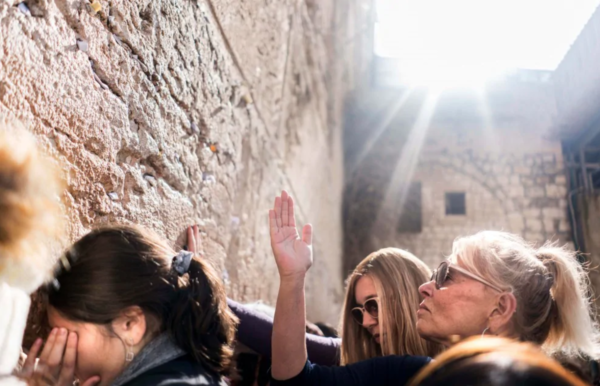
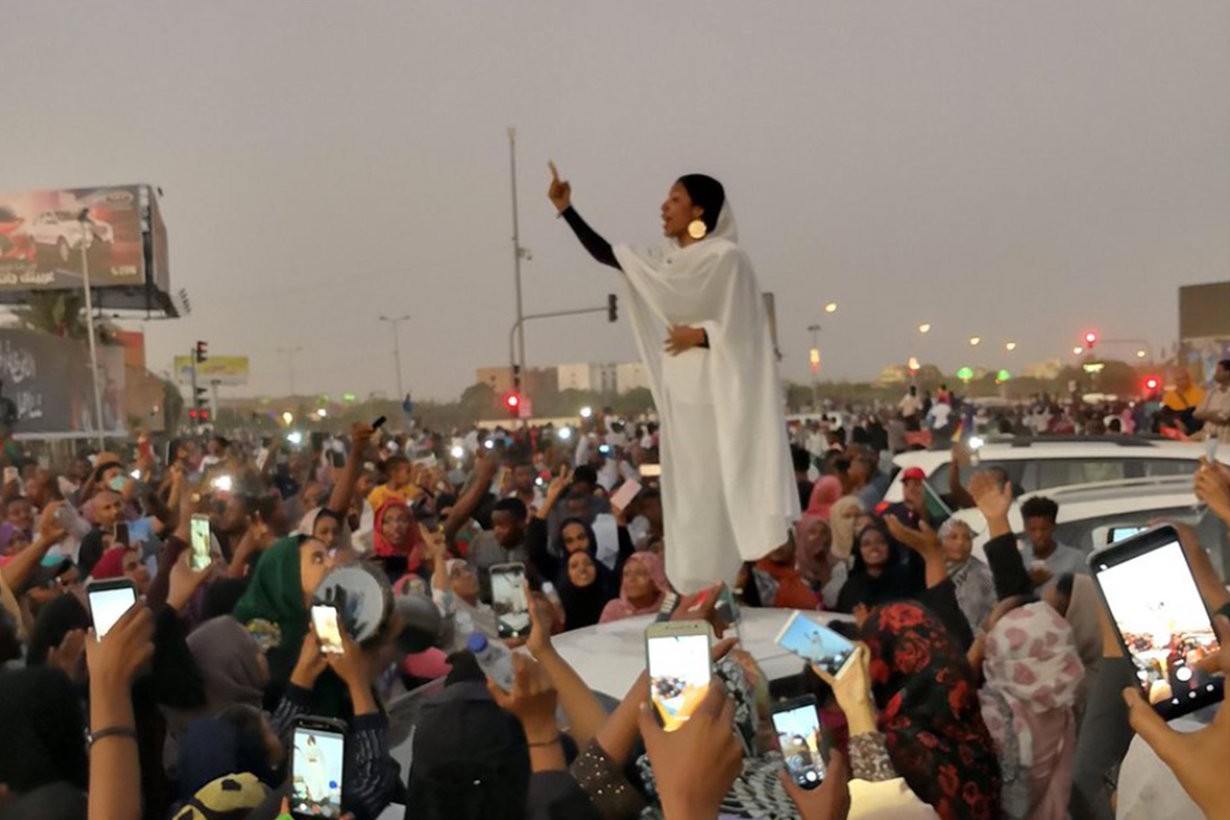
Reactions
Comments Powered by Disqus